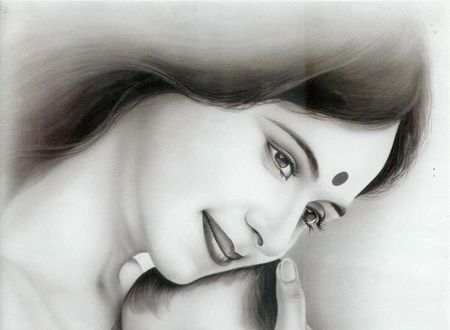In the mind, the past and the future are not dry abstract lists of experiences that we can divide into two columns but a rich tapestry resembling a fine Persian rug. We take the past with us when we dream of the future. Conversely, thoughts of the future color the mind as we delve into our past. The two are inseparable.
The past is a network of thoughts holding experiences like tree roots that prevent a mountainside from sliding into the valley below. The future is also a network, full of ideas waiting for desired experiences to come to fruition, like honey bees circling buds about to flower. Just as thick winter clothing is uncomfortable in the summer and vice-versa, often we need to alter our attitude to deal with the past or aspire for the future. That is where the present comes in, to help put everything into perspective.
As we read an engaging book, page after page, our attention is on the printed words and not the blank background. Until we turn to a blank page at the end of the book, we may be unaware that every page has a blank background.
The present resembles an empty page, and the words printed on it are like the past and the future. Sometimes it is necessary to focus on the past, mining it for knowledge and experience. It may also be prudent to consider future consequences as we think and act. But we cannot afford to let the present slip through our fingers.
There is a plethora of online information on the benefits of being present. Yet mastery of this skill eludes most. We experience fleeting moments of being present, such as receiving unexpected, shocking news. The mind “freezes,” its dreaming stops, and we fall into the present at such moments.
Being in the present does not mean that we forget the past or ignore the future. Awareness of the present brings choice and clarity of what we want to include in our mind space. Employing choice is essential, clarity even more so. Both make the mind productive. The excess mental energy which previously went to waste pursuing unwanted thoughts gets stored for future use.
Choice helps us declutter the mind by minimizing the space occupied by memories of yesterday and tomorrow’s promises, which consume much of our thought energy. Clarity helps add the flavor of perspective to our experiences, thereby draining the past of its painful memories and preventing fear from contaminating thoughts relating to the future.
Neither choice nor clarity is fixed; they cannot be, as the mind is continually moving. Choice and clarity have to be dynamic and ever-changing, like the colors of the sky changing through the day as the sun shifts its position.
Imagine taking a giant blower to the clouds and moving them aside, and revealing the blue sky. Employing choice and clarity is like blowing aside thoughts, revealing the emptiness once occupied by thoughts of the past or the future.
We may equate an experience of the present when our attention meets emptiness where thoughts once existed.
In the beginning, it may seem like an impossible chore to employ the power of choice in picking and discarding amongst the thousands of thoughts we encounter daily. Clearing the mind space can be tiresome and tedious. However, persistence will pay off. Mastery comes not just by how often we practice but how we practice.
Here is a practical approach that does not involve sitting in one place and ‘picking and choosing’ amongst thoughts.
For example, the mind may be so accustomed to the layout and the furniture in your living room that nothing appears new. It is as if you are ‘blind’ to the existence of the floor, walls, and ceiling.
Try taking a ‘step back’ and look at the room as a whole. Don’t focus just on the curtains, but the wall on which the curtains hang. Don’t focus only on the television, but the space around the television. Don’t focus on a stain on the carpet that catches your eyes, but the entire floor space. You can do this exercise anywhere, even outdoors.
Such an exercise may have the effect of ‘waking up the mind.’ Even though we may be physiologically awake, our attention is asleep on a bed of thoughts. A sudden rush of ‘newness’ that pervades the mind via noticing more of the ‘background’ as we move through our busy lives begins the process of moving towards the present.
The mind and the present intersect when we are aware not only of the thoughts but also the background on which they exist. When choice and clarity merge, that is, when we can choose which thoughts to keep or discard without much effort while maintaining a neutral perspective, the mind goes from being an ordinary, habit-driven, thought-fueled baggage to one that has immense potential.









Comments & Discussion
7 COMMENTS
Please login to read members' comments and participate in the discussion.